Thermoset Injection Molding Manufacturer
Thermoset injection molding refers to modifying heat-cured polymers, or thermosets, by injecting the material in mold cavity to form parts. The materials go through irreversible chemical processes when heated, cementing their form. This technique is appropriate for various industries, including the automotive, electronics, and appliance sectors because it produces strong, long-lasting products with high dimensional stability.
Advantages of Injection Molding Thermoset Materials
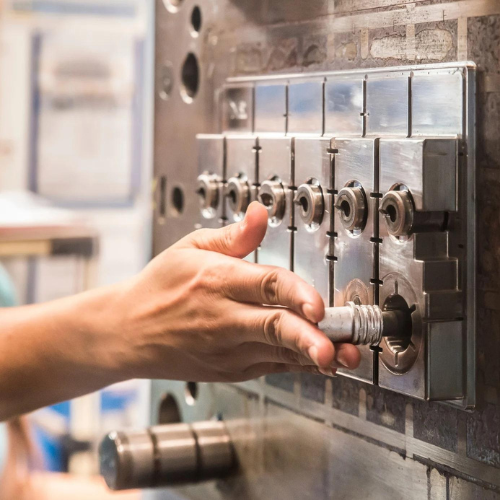
Thermoset injection molding generates less waste since extra material is frequently recyclable or reusable. It helps with attempts to promote sustainability and reduce costs.
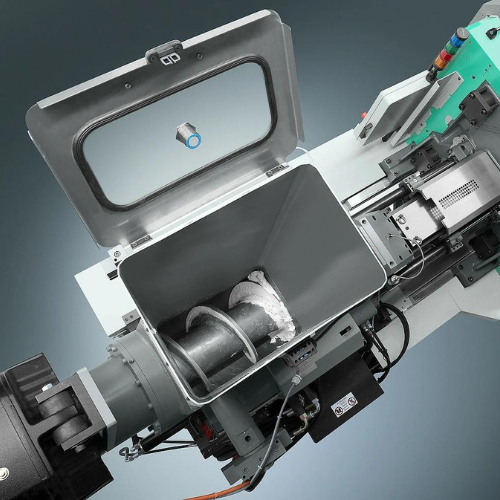
Thermosets have remarkable mechanical qualities, such as high strength and durability. They can precisely regulate the process of molding offered by injection molding.

When thermoset cures materials fully, they maintain their shape and dimensions despite temperature variations, assuring constant product quality throughout time.
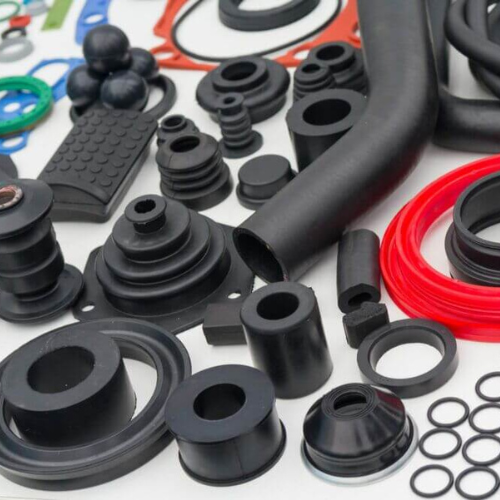
The production of elaborate and complex part geometries is possible using injection molding. It is advantageous for parts that need intricate patterns or unique characteristics.
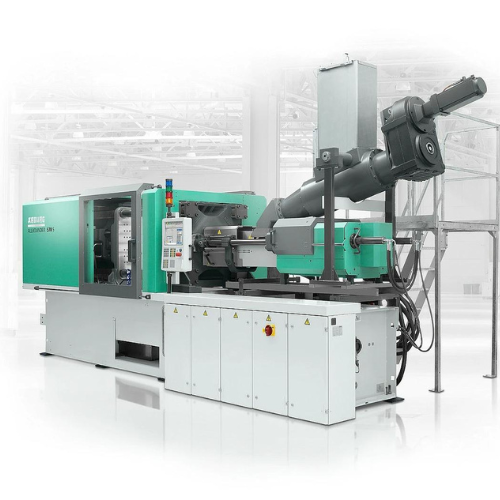
Thermoset materials are ideal for applications involving exposure to chemical substances or severe environments because they have perfect chemical resistance.

Compared to other thermoset processing techniques, thermoset injection molding often requires shorter curing times, leading to quicker production cycles.
Applications of Thermosetting Plastic Injection Molding
- Components for electronics and electricity
- Auto Accessories
- Materials for Construction
- Telecommunications
- Aerospace parts
- Medical Equipment
- Consumer products
- Appliance components
- Energy Sector
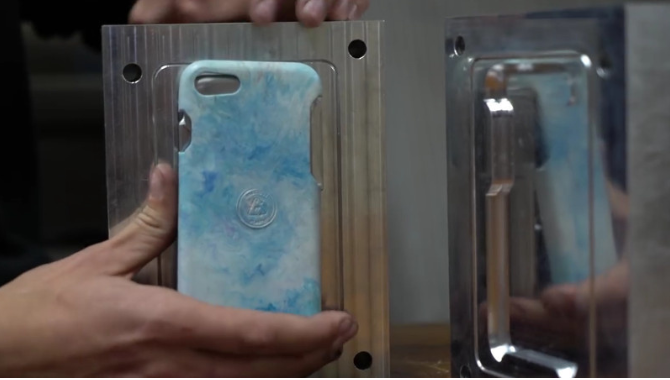
Injection Molding Thermoset Materials


Acrylic Resins – Epoxy resins have outstanding adhesion, chemical resistance, and mechanical strength qualities often utilized in structural applications, electronics, aircraft components, and encapsulation where great strength is necessary.
Polyurethane Resins – They have outstanding mechanical qualities and are also resistant to chemicals and moisture.
Benzyl Resins – They are adaptable thermosetting materials with superior dimensional stability, heat resistance, and electrical insulation.
Bakelite – One of the first synthetic polymers was the well-known phenolic resin known as bakelite. It provides excellent electrical insulation, great heat resistance, and dimensional stability. Besides, it has a long history of usage in various products, including consumer items, automobile parts, and electrical components.
Silicone Resins – Thermosets made of silicone are renowned for having outstanding heat resistance, flexibility, and weather ability.
Formaldehyde Urea Resins – Thermosets made of urea offer superior electrical characteristics, dimensional stability, and chemical and water resistance.
Design Tips for Injection Molding Thermoset Materials


- Material Selection – Choose a thermoset material that satisfies the project by considering elements like heat resistance, mechanical qualities, chemical resistance, and electrical properties.
- Runner and Gate Design – Rather than using the ones used in thermoplastic molding, use big gates and runners. Less fluid thermoset materials require adequate flow pathways to prevent early curing and excessive pressure accumulation.
- Ventilation – Include the correct venting systems to let gases and air escape as you fill the mold. Surface flaws and insufficient filling may be the result of inadequate venting.
- Mold Temperature – To promote uniform curing across the component, maintain mold temperature regulation to assure dimensional precision and helps avoid problems. Cooling Channels Utilize effective cooling channels in the mold to regulate curing periods and reduce cycle times.
- Part Geometry – Encourages consistent curing to reduce the danger of warpage and design components with homogeneous wall thickness. Avoid thin portions and edges since they might cause mold-filling difficulties.
- Wall Thickness – Maintain a constant wall thickness to encourage consistent curing and prevent sink marks or warpage caused by uneven shrinkage.
- Gate Placement – Place gates for materials to flow freely and distribute evenly across the portion.
- Undercuts and Threads – Reduce undercuts and threads to help in part ejection.
- Mold Release – Avoid components from adhering to the mold surfaces by using the correct mold release agents.
- Mold Design – Ensure the decreased flowability of the material.
- Mold Surface Finish – To reduce surface flaws on the finished products, choose high-quality mold finishes.
- Parting Line – Design the separation line to have as little visual impact as possible, and include elements that help with accurate alignment during assembly.
- Testing and Prototyping – Before completing the design, do testing and prototyping to find potential problems. The curing behavior of thermoset materials can be delicate to processing circumstances.
- Considerations for Post-Molding – Thermoset components require post-molding procedures like trimming, drilling, or machining. Consider these operations while designing.
- Consult professionals – Work with experienced experts to ensure the design takes the unique characteristics and actions of thermoset materials.
Choosing Thermoset Injection Molding Machine


A specialized tool used to create thermosetting plastic goods is a thermoset injection molding machine. The thermoset materials are heated effectively and injected into the molds, where they solidify and stop melting.
This method makes a strong, heat-resistant, and dimensionally stable product.
Consider;
- Compatibility of Materials – You should confirm that the machine is suitable with the exact thermoset material you want to use because they all have different processing needs.
- Clamping Pressure – Choose a machine that can support the size and intricacy of the pieces you intend to make.
- Capacity for Injection – The machine’s shot capacity should not be less than the amount of material needed for your products.
- Temperature regulation – Pick a machine with cutting-edge temperature control technologies.
- Cycle Period – To guarantee effective production rates and less downtime, evaluate the machine’s cycle time.
- Energy Savings – To save operating expenses, look for equipment with energy-saving features.
- Flexibility – Pick a machine with parameter modifications to handle different thermoset materials and component designs.
- Expense factors – Consider the machine’s capabilities and long-term cost reductions.
- Safety Options – Give high priority to equipment with reliable safety features to safeguard operators throughout installation, use, and maintenance.
- Cooling for Mold – Controlling curing periods and cycle times is essential for maintaining component quality.
- Injection Pressure and Speed – Make that the machine can inject materials at the required pressures and rates to fill the mold without causing it to cure too soon.
- Curing Time – Take into account how long the chosen thermoset material needs to cure.
It is essential to have a machine that can efficiently regulate both heating and cooling operations.
Step-by-step Thermoset Injection Molding Process
Usually, the thermoset injection molding process involve the following key steps:
Step 1: Material Selection
Select appropriate thermoset materials with good heat resistance, mechanical strength, and chemical resistance.
Step 2: Getting Material Ready
The thermoset material comes as liquids, pellets, or granules. It can entail blending the basic resin with necessary additives, fillers, and catalysts. Put the prepared material into the hopper of the injection molding machine, where the hopper feeds it into the barrel of the device.
Step 3: Heating and Melting
The substance is heated in the apparatus’s barrel until it reaches the processing temperature set. In contrast to thermoplastics, the objective here is to soften the material rather than melt it.
Step 4: Injection
Soften the material and inject it into the mold cavity through a gate by a screw inside the machine’s barrel. To prevent early curing, regulate the injection pressure and speed carefully.
Step 5: Filling the mold
The substance pours into and fills the mold cavities.
Step 6: Curing
The mold seals after filling, and the curing process starts. Besides, the thermoset material’s cross-linking chemical processes start when the mold heats to the proper temperature.
Step 7: Cooling and Solidification
After the portion cures, the mold chill to promote further solidification. Due to the quicker curing of thermoset materials, the cooling period is less than in thermoplastic injection molding.
Step 8: Component Ejection
The mold opens to allow solidified components to be expelled from the mold chamber using ejector pins. Smooth ejection is made possible by draft angles on the component and mold surfaces.
Step 9: Trimming and Finishing
Eliminate extra material and enhance the look of the finished item by trimming, deburring, or using other finishing procedures.
Step 10: Quality Inspection
The final components pass quality inspections to check the dimensions, surface finishes, and other attributes. Lastly, you should prepare and pack the approved components for distribution to consumers.
Techniques in Troubleshooting Thermoset Injection Molding Problems
| Problems | Troubleshooting techniques |
| Curing issue
Undercuring-Parts with inadequate curing may have insufficient strength and durability. Overcuring-Cause components to become fragile or to lose their mechanical qualities.
|
-To get the appropriate curing level, modify the molding cycle’s parameters, such as injection pressure, mold temperature, and cure time.
-Ensure appropriate cure throughout the molding process. |
| Surface Defects
Bubbles or blisters may appear on the surface because of moisture or trapped air. Voids-This problem may occur in the part structure due to unfilled or improperly cured sections.
|
-Reduce moisture absorption, be sure you handle and store materials properly.
-Reduce trapped air by using vacuum-assisted molding processes. -Improve the mold’s construction to let air out during injection. |
| Material Selection
Using the incorrect thermosetting resin might cause processing issues and unfavorable component characteristics.
|
-Choose a resin that satisfies the necessary performance requirements, and do extensive material testing and analysis.
-Consult with material suppliers to confirm that the resin is compatible with the injection molding procedure. |
| Distortion and warping
Warpage-After molding, components may warp or bend due to uneven cooling or poor material flow. Dimensional errors can result from distortion caused by improper mold design or uneven curing.
|
-Reduce temperature gradients and optimize mold cooling channels for even cooling.
-Limit shear stresses and regulate material flow by adjusting the injection settings. -Stop pieces from clinging to the mold surface using mold release agents.
|
| Material Flow
Flash-Extra material can escape from between mold parts, creating a flash at the edges. Short Shots-Insufficient material flow might result in pieces that are missing portions or are unfinished.
|
-To guarantee appropriate material flow and prevent flash, alter the injection pressure and speed.
-Ensure the mold’s components are correctly aligned and tightened.
|
| Surface finish
Blemishes on the surface-Mold problems or the characteristics of the material might result in a poor surface finish, such as roughness or inconsistentness.
|
-Polish or texture the mold surface to get the required surface finish.
-Help with part release and enhance surface quality using mold release agents. -To prevent contamination accumulation, properly care and clean the molds. |
| Mold Fouling and Degradation
Resin Buildup-Resin residues that collect on the mold surface can cause faults and lower production hence mold fouling and degradation. Mold degeneration-Over time, repeated contact with harsh chemicals and high temperatures can lead to mold degeneration.
|
-To avoid resin accumulation, maintain and clean the mold regularly.
-Use coatings or mold release agents to reduce resin adherence. -Use corrosion-resistant mold materials and coatings of the highest caliber. |





